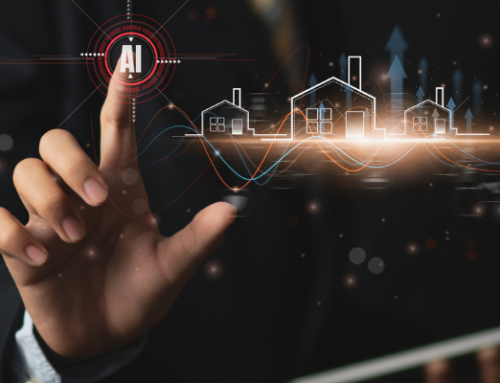Artificial Intelligence (AI) is revolutionizing industries worldwide, and construction is no exception. While the construction industry has traditionally been slow to embrace new technologies, the tide is turning as the immense benefits of AI become undeniable. However, it’s crucial to weigh these benefits against potential risks to make informed decisions about integrating AI into construction projects.
Unlocking the Benefits of AI in Construction
Before diving into the risks, it’s worth highlighting the game-changing advantages AI brings to the construction industry. According to recent studies, AI-driven data analysis can boost productivity in construction firms by up to 50 percent, paving the way for revolutionary changes in project planning, execution, and monitoring. Key advantages include:
Enhanced Efficiency: AI-driven tools can optimize project planning and scheduling by analyzing vast datasets to predict potential delays, resource constraints, and challenges. This proactive approach enables construction managers to address issues before they escalate, ensuring smoother project execution and minimizing downtime.
Improved Safety: AI’s predictive analytics and intelligent monitoring systems can identify potential hazards and prevent accidents, creating a safer working environment. Additionally, AI aids in design optimization and quality control, generating innovative structural solutions, identifying design conflicts early, and streamlining processes like 3D modeling. The result? Higher-quality outcomes with fewer costly errors and rework.
Cost Savings: By optimizing resource allocation and improving efficiency, AI helps reduce labor and material costs. Predictive maintenance of equipment and machinery, facilitated by AI, minimizes downtime and repair expenses. Moreover, AI-driven insights enable better decision-making and strategic planning, leading to more profitable project management.
“AI is not just a futuristic concept; it’s a present-day tool that helps contractors meet deadlines, manage staffing issues, reduce costs, and enhance health and safety measures.” – Matt Abeles, ABC’s Vice President of Construction Technology and Innovation
Navigating the Challenges of AI Integration
Despite its promising benefits, AI in construction comes with its own set of challenges that must be carefully managed to ensure a smooth and successful integration.
High Initial Costs: Implementing AI requires significant financial investment in advanced equipment, software, and training, which may be challenging for smaller construction firms. Managing these costs effectively is crucial to avoid financial strain. For example, acquiring drones for site surveys or advanced robotics for construction tasks can involve upfront expenses ranging from $10,000 to $100,000, while customized AI software solutions for medium-scale projects can cost up to $500,000.
Data Security: In the increasingly digital world of construction, AI systems are prime targets for cyberattacks, making robust data security essential and regular cybersecurity assessments. Companies must implement strong cybersecurity measures, such as encryption, access controls, and secure protocols, to safeguard sensitive project data. For those working on DoD contracts, compliance with the Cybersecurity Maturity Model Certification (CMMC) is non-negotiable, while projects involving healthcare facilities must adhere to HIPAA regulations to protect patient information. Handling payment data brings PCI DSS into play, ensuring the security of credit card information. By adopting the ISO/IEC 27001 standard, construction companies can showcase their commitment to protecting sensitive information. Beyond internal measures, securing the entire supply chain is vital — ensuring that all vendors and subcontractors meet stringent security standards to protect data throughout the project lifecycle.
Privacy Concerns: Navigating privacy in construction AI involves more than just following rules—it’s about building trust. Compliance with regulations like the CCPA and GDPR is crucial, but so is going beyond the basics. By setting up strong access controls and using privacy-enhancing technologies like differential privacy and federated learning, companies can protect individual identities while keeping data valuable. This approach ensures that even as data flows between different stakeholders, privacy remains a top priority, safeguarding everyone involved in the project.
Computing Power: Developing and deploying AI models, especially those involving complex computations and massive datasets, require significant computing power. The need for high-performance computing devices like GPUs and TPUs increases with AI algorithm complexity. This presents challenges in terms of cost, energy consumption, and scalability, especially on project sites with limited connectivity. Ensuring sufficient computational resources can be particularly challenging in remote or underdeveloped areas.
Workforce Displacement: As AI automates more tasks, there is concern about job losses and the need for reskilling workers. The integration of AI, such as autonomous machinery or automated project management systems, may lead to resistance from employees who fear losing their jobs. This can negatively impact morale and productivity. However, it’s important to note that the construction industry will need nearly 454,000 new workers by 2025 to meet industry demand, highlighting the need for a balanced approach. Forward-thinking construction companies are investing in training programs to reskill their workforce, integrating AI in a way that complements human labor rather than replaces it. This approach helps mitigate fears of displacement while addressing the industry’s growing labor needs.
Ethical and Legal Risks: AI introduces ethical and legal challenges, including concerns about bias, discrimination, accountability, and transparency. Construction companies are establishing clear frameworks and standards to deploy AI responsibly and in a trustworthy manner. Future industry standards and government regulations will likely guide best practices concerning the societal and environmental impacts of AI technologies, promoting greater transparency.
A Strategic Framework: The NIST AI RMF
One of the critical tools for managing these challenges is the NIST AI Risk Management Framework (AI RMF). This framework provides a structured approach to the responsible development, deployment, and use of AI systems, emphasizing governance, transparency, and accountability. By addressing areas like bias detection, ethical guidelines, and security measures, the NIST AI RMF ensures that AI in construction is not only effective but also fair and aligned with societal values. Adopting this framework helps construction companies balance innovation with risk management, enabling them to harness AI’s full potential while maintaining trust and compliance with regulatory standards.
Implementation Strategies
Evaluating the pros and cons of AI in construction involves a balanced approach. Companies can start by conducting a comprehensive cost-benefit analysis, including initial investment costs, potential savings from increased efficiency and reduced errors, and long-term financial impacts. Understanding the return on investment (ROI) is key to making informed AI adoption decisions.
AI Integration: Integrating AI into construction processes involves incorporating AI systems to improve automation and efficiency. This includes identifying relevant application scenarios, fine-tuning AI models to specific construction tasks, and ensuring compatibility with existing systems. For example, AI can be integrated into project management to optimize scheduling and resource allocation, improving overall project efficiency. Challenges may include data interoperability, the need for personnel training, and associated change management.
Risk Assessment: Companies will want to evaluate the potential risks associated with AI, such as cybersecurity threats, data privacy issues, and workforce impact. Developing robust risk management strategies, including strong cybersecurity measures and employee training, helps mitigate these risks.
High Expectations: AI’s potential often leads to unrealistic expectations. While AI can automate many construction tasks, it cannot entirely replace human judgment and decision-making. Over-reliance on AI can lead to decisions being made solely based on AI recommendations, which may not always be optimal or contextually appropriate. Educational and awareness programs can provide stakeholders with a clear picture of AI’s applications and limitations.
Stakeholder Engagement: Involving employees, clients, and stakeholders in the AI decision-making process addresses concerns and builds support for AI initiatives. Transparency about AI integration, its benefits, and its limitations fosters a positive attitude toward technological advancements.
Trust and Transparency: Building trust among users is crucial for the successful implementation of AI systems. Transparent data processes and ethical data handling protocols are essential to foster user confidence in AI systems. Construction companies should clearly communicate how data is collected, stored, and used, and ensure that data handling practices adhere to ethical standards. This transparency helps build trust and ensures that AI technologies are deployed responsibly.
Looking Ahead
AI presents significant opportunities for the construction industry, but it also brings challenges that require careful management. By thoroughly evaluating the risks and rewards and adopting a strategic approach, construction companies can unlock AI’s full potential, driving unprecedented innovation and growth in projects. To learn more, contact Ryan Paul or Jennifer French, Partners on PBMares’ Construction & Real Estate team and Antonina McAvoy, Partner on PBMares’ Cyber & Risk Advisory team.






